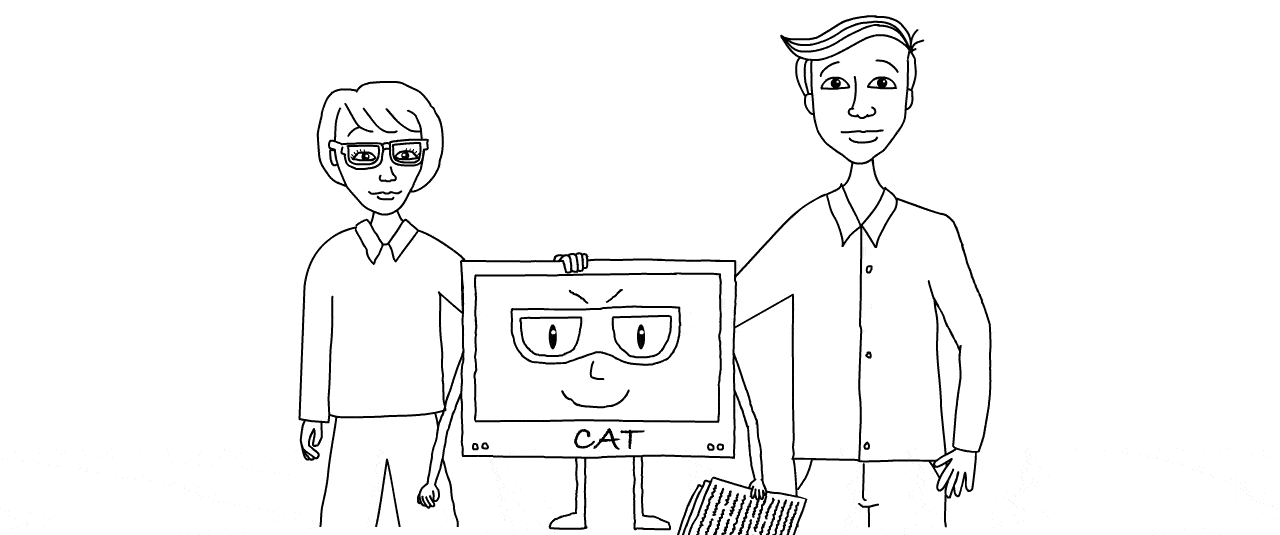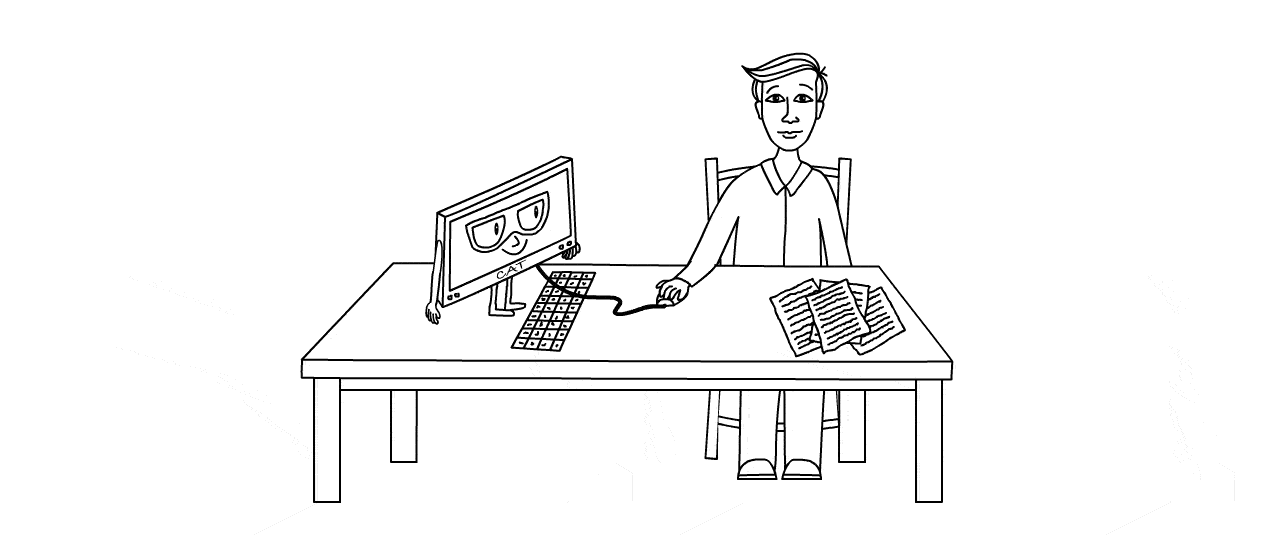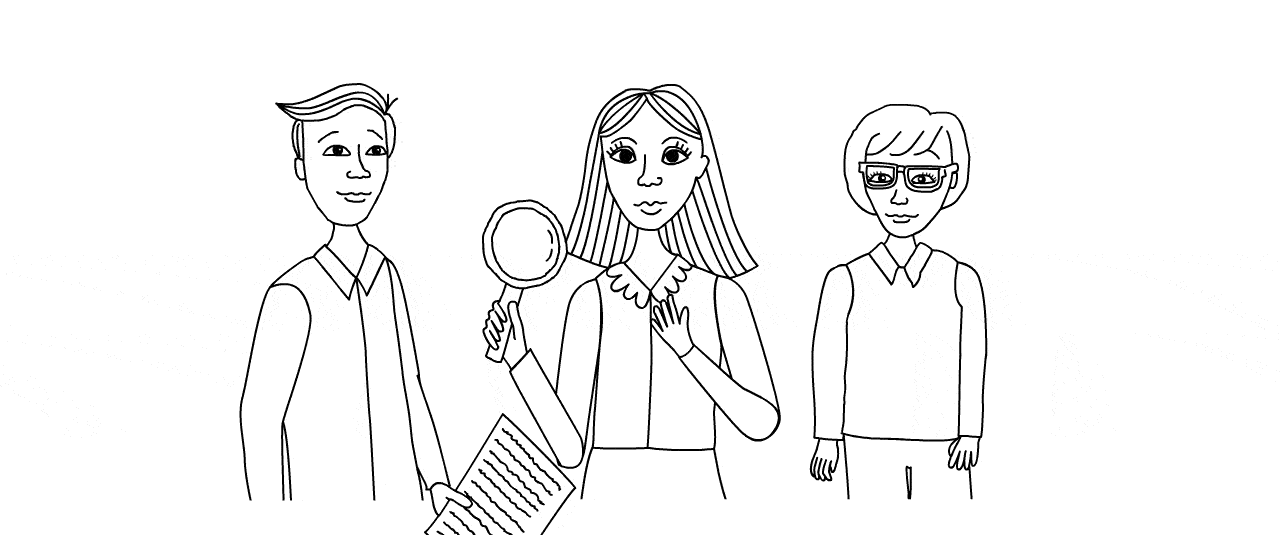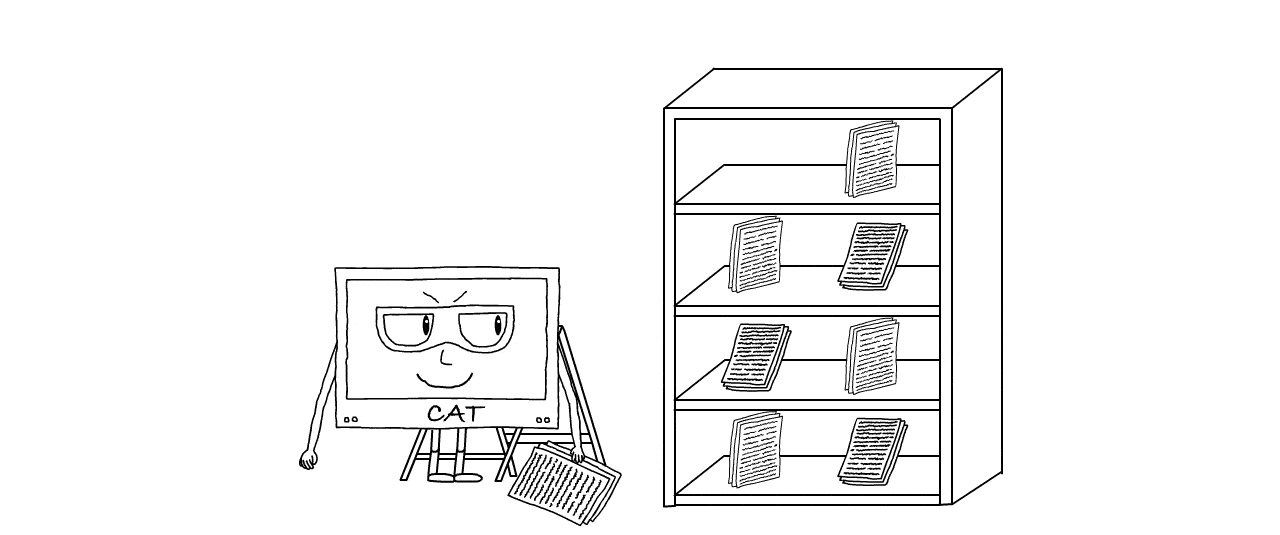











Meet your translation team: Ellie, one of our project managers, Dan, one of our human linguists, and CAT, the software they use to translate your document.
1 / 12
CAT stores your previous translations in his translation memory for future use.
2 / 12
When we receive your document, our project managers, like Ellie, use their skill and experience to optimise your document for translation.
3 / 12
Once optimised, Ellie presents the document to CAT.
4 / 12
CAT prepares the document by breaking it up into meaningful groups of words and phrases, called segments.
5 / 12
CAT then compares these segments to his translation memory to look for matches.
6 / 12
CAT then performs an analysis that tells Ellie how many matches exist and how much of the document remains to be translated. The more matches CAT finds, the more savings there are for you.
7 / 12
CAT now makes a partially translated bilingual document that contains the matches and the remaining untranslated segments.
8 / 12
Next, Ellie and CAT let Dan continue translation. The matches that CAT has found enable Dan to work quicker and efficiently, speeding up delivery back to you.
9 / 12
CAT assists linguists like Dan to improve the quality of their work by enabling them to be more consistent and recall specific terminology.
10 / 12
After Dan completes translation with CAT, he shares his work with a second linguist for review. Ellie then checks the final reviewed translation using CAT’s quality assurance tools.
11 / 12
Lastly, Ellie delivers the final translated document back to you, before instructing CAT to update his translation memory – ready for the next project.
12 / 12




